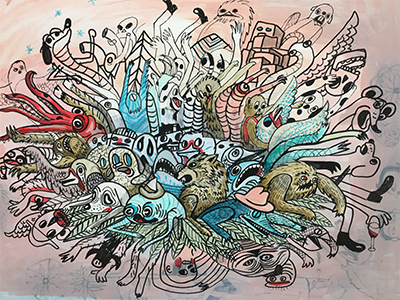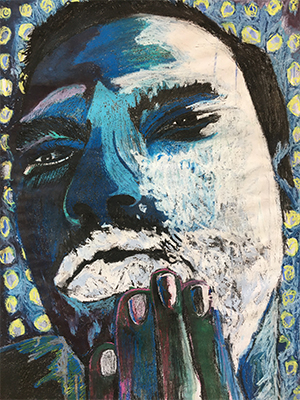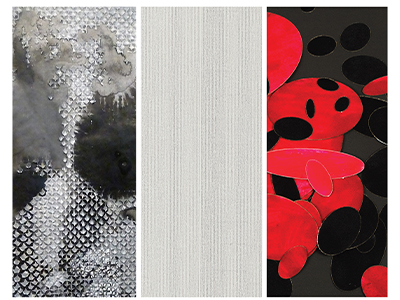Dept. of Art + Design Ushers In Spring with Two New Exhibits
 WCU’s Art + Design department ushers in Spring with two new exhibits opening this
week. Both exhibits are FREE and open to students and the public in the John H. Baker gallery in the E.O. Bull
Center for the Arts, 2 E. Rosedale Ave., and the Knauer Gallery in the Swope Music
Building and Performing Arts Center, 817 S. High Street. Gallery hours are Monday
– Friday from 9 a.m. – 4 p.m. For information visit www.wcupa.edu/arts or https://www.wcupa.edu/arts-humanities/artDesign/exhibitionsEvents.aspx.
WCU’s Art + Design department ushers in Spring with two new exhibits opening this
week. Both exhibits are FREE and open to students and the public in the John H. Baker gallery in the E.O. Bull
Center for the Arts, 2 E. Rosedale Ave., and the Knauer Gallery in the Swope Music
Building and Performing Arts Center, 817 S. High Street. Gallery hours are Monday
– Friday from 9 a.m. – 4 p.m. For information visit www.wcupa.edu/arts or https://www.wcupa.edu/arts-humanities/artDesign/exhibitionsEvents.aspx.
In the John H. Baker gallery is A Species of Drawing from March 2 – 27 with artists’ reception on Thursday, March 5 from 4 – 7 p.m.
The exhibit features 11 contemporary artists whose work explores a range of formal and conceptual approaches to drawing. The selected works offer a generous range of applications and materials that seek to challenge preconceived notions of what drawing should be, while revealing the varied roles drawing plays in each artist’s practice.
Curated by Kate Stewart, Professor of Painting and Drawing in the Department of Art
+ Design, the show refers to a quote by Edgar Degas, "Drawing is the artist's most
direct and spontaneous expression, a species of writing: it reveals, better than does
painting, his true personality."
Narrative runs through many of the works on display, and there is also a continuous screening of the documentary film William Kentridge: Art from the Ashes (1999) for the duration of the exhibition.
Exhibiting artists include Phillip Adams, Todd Arsenault, Leah Bailis, Nicholas Burns, Joan Wadleigh Curran, Lindsay Deifik, Arthur Haywood, Sebastien Leclercq, Heidi Leitzke, Paul Manlove and Matt A. Osborn.
In Knauer gallery, works by Alice Oh, Sarah Steinwachs, and Lisa Sylvester will be featured in An Incomplete Image of the Universe from March 6 – April 10, with artists’ reception on Wednesday, March 18 from 4 – 7 p.m.
The exhibition title is a phrase taken from The Garden of Forking Paths, a Borges short story. This “incomplete image of the universe” refers to a labyrinth in book form that was left unfinished by its maker. A labyrinth is a complex, intricately ordered structure that is both reflective path and confounding trap. It demands slowness and is an act of devotion. This structure, and Borges’s more particular description of it, resonate with the formal qualities of the works made by Oh, Steinwachs, and Sylvester, as well as the processes they employ.
Oh, Steinwachs, and Sylvester each use motif and pattern to explore and express fundamental, yet conflicting, life principles: control vs. chaos, randomness vs. organized systems, perfection vs. imperfection, ambiguity vs. precision, the mundane vs. the extraordinary. This focus on pattern and repeated motif, as well as the tensions they reveal and create, are metaphors for dualities and contradictions that are inherent in people’s lives.
These three artists also share important commonalities regarding process. Their various approaches embrace rigor, deliberation, and precision, and are at once meditation and ordeal, the literal passing of time as small units are built up to create layered systems of undulating pattern. These processes contribute directly to the meanings inherent in their works, as well as the visual outcomes.

